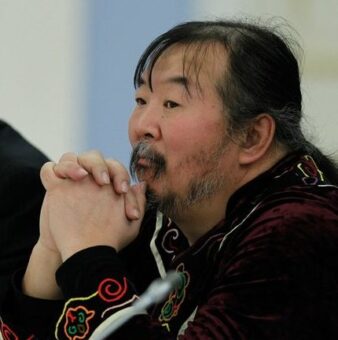Nine ways to support the rights of indigenous people

What are the practical steps to push for recognising the rights of indigenous people around the world? Our expert panel shares their thoughts
1. Focus on the priorities
Indigenous people can’t choose their own way of life, get control over their own education, healthcare and so on, unless their lands are secure. That’s the overwhelming priority. All other issues are secondary. If their land rights are recognised, tribal peoples thrive. If they’re not, the outlook is bleak. Jonathan Mazower, advocacy director, Survival International, London, UK. @Survival
2. Include indigenous people in discussions of land use
Without land, indigenous peoples have no livelihood, no identity, no means of survival. In this context, states need to respect the principle of free, prior and informed consent. Indigenous peoples need to be consulted about use of their land and included in development processes. Companies need to take this on board too and conduct proper due diligence prior to embarking on, and during, investment projects. Lucy Claridge, legal director, Minority Rights Group International, London, UK. @ClaridgeLucy
3. Apply the law to ensure land rights are protected
Laws on land rights are often good, but they’re universally flouted. Brazil’s an example – all Indian tribes in Brazil should have had their land protected in law by 1993 according to the constitution, but dozens are still waiting. In the meantime many, like the Guarani, live in dire circumstances – often camped by roadsides, in terrible conditions, with levels of disease and suicide that are off the scale. And when they try to re-occupy small bits of their lands, they’re frequently shot at. Jonathan Mazower, advocacy director, Survival International, London, UK. @Survival
4. Build public awareness
Informed public education and awareness building is critical to the implementation of indigenous rights. This is a responsibility of all. There is a lot of mistrust for good reason. But how we inform ourselves and understand our own complicity in consumption and policies that sustains the need for production, profit, and exploitation is absolutely necessary. We can then began to understand the on impact on indigenous peoples, their territories and lands. As an indigenous person our relationship to the land is the heart and soul of who we are, our identity, and our survival. Suzanne Benally, executive director, Cultural Survival, Boulder, Colorado, US.
5. Recognise their role in conservation
Indigenous peoples’ key role in conservation – which is often one of the reasons used for their eviction – needs to be recognised. Indigenous peoples’ dependence on the land for food, shelter, identity and survival has resulted in a deep respect for that land and a need to conserve it. Indigenous peoples traditionally develop a set of conservation measures that are passed down from one generation to the next, and as a result they should be seen as the best people to conserve that land. Lucy Claridge
6. Bridge the gap between policy and practice
Another major challenge is the gap between policy and law and practice. There are many excellent examples of rulings by international courts on the rights of indigenous peoples including the Endorois case and others such as Saramaka in Suriname which are legally binding on governments but yet years later many of these cases remain unimplemented. The same gap exists at the level of policies and safeguards held by multilateral agencies like the World bank and other international finance institutions which govern how they can lend for projects that effect indigenous peoples. The policies often have shortcomings but are broadly speaking vast improvements on the situation 20 or 30 years ago. Yet despite this the policies and safeguards are frequently unimplemented or disregarded in some way. Conrad Feather, project officer, Forest Peoples Programme, Oxford, UK.@ForestPeoplesP
7. Encourage the state to fulfil wider rights
There is a human right to education, and a human right to an adequate standard of living – and there is also a right to development: the right to be included in development processes which affect you. The right to development includes the fulfilment of civil, political, economic, social and cultural rights and freedoms. States bear the duty to bear the burden for creating conditions favourable to a people’s development. Lucy Claridge
8. Don’t speak for indigenous people
Perhaps the greatest obstacle to advancing indigenous peoples interests is the slow process of building coalitions between “fourth world” (indigenous) nations and between fourth world NGOs. NGOs tend to be focused on their priorities and often “speaking for” fourth world peoples generally. We have generalised the many nations into “indigenous peoples” and forgot that what is important in central Africa may not be a priority in Asia. Rudolph C Ryser, chairman of the CWIS board of directors, Center for World Indigenous Studies (CWIS), Olympia, US.
9. Learn from stories of progress
Notwithstanding the dire situation for many peoples there are also some incredibly inspiring stories. From Peru where I work mainly there is the story of the Achuar people in the north who have come together to defend their territory and implement their own vision for self government. For over 15 years they have successfully resisted the efforts of various oil companies and the government to explore for oil on their territory. Conrad Feather
Mining Europe’s biggest rare earth deposit could make life ‘impossible’ for Sámi communities
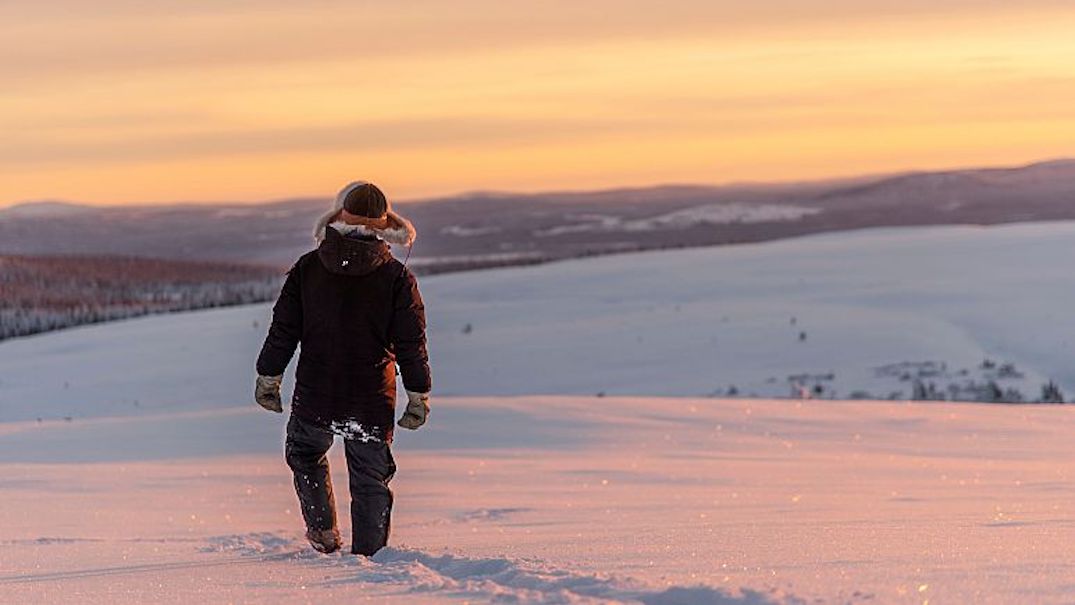
In January, Swedish state-owned mining company LKAB discovered more than 1 million tonnes of rare earth minerals in Kiruna, Sweden’s northernmost city.
These rare earth minerals are key components in everything from electric vehicle batteries to mobile phones to wind turbines. And the discovery of this deposit – just 30 kilometres from the Arctic circle – prompted a slew of celebratory headlines.
Many see the newly found resources as a way of ending Europe’s reliance on Russia and China for the rare earth minerals needed to fuel the green transition.
But it’s a different story for the Indigenous Sámi population that lives near the site.
Local Sámi communities are already affected by an existing Kiruna iron ore mine – and fear the new deposit discovery will threaten their traditional migration routes.
What impact has mining already had in Kiruna?
The Sámi people are spread across four European countries: Russia, Finland, Norway and Sweden. Their languages and culture are deeply linked to their reindeer herds, the land and their way of life.
“Sámi culture is based on a traditional way of land use that has taken place long before Norway became Norway or Sweden became Sweden,” Karin Kvarfordt Niia, a spokesperson for the Gabna Sameby one of the local reindeer communities, tells Euronews Green.
“It’s a way of using land that is by definition green because we are actually letting the animals graze and find food for themselves in their surroundings.”
Her Sameby start their year in May in the mountains near the Norwegian border. Then in August, the reindeer start to move east and they follow them.
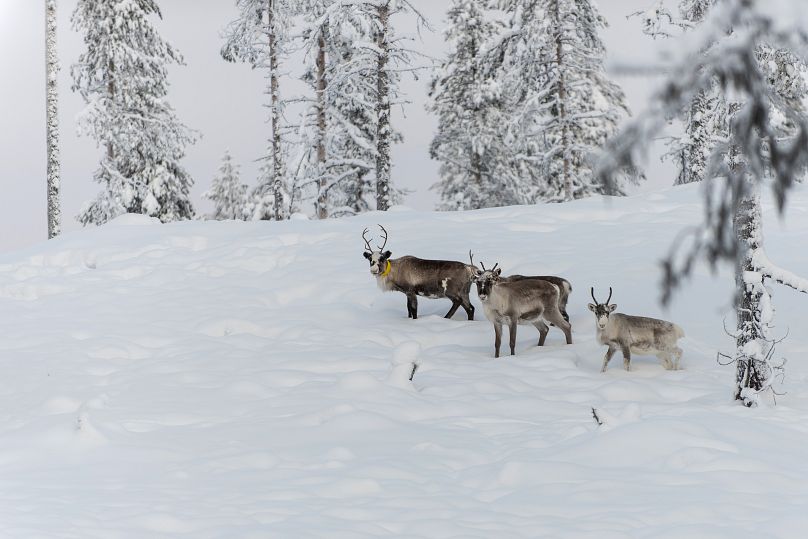
To access the winter grazing lands they have been using for hundreds of years, the herders have to move from one side of Kiruna to the other.
“It was important land for us and now this. We have a city and a huge mine,” Karin says.
The mine and the town have left the Gabna Sameby with just a small strip of land, a few kilometres wide, for their reindeer herd to migrate through. Infrastructure for the industry cuts across their historic routes, with railways and roads crisscrossing the land.
“We’re extremely impacted by the mine, LKAB has already cut off our different migration routes, and then the mine has caused damage to the lakes so we are not able to fish there,” Karin explains.
“It isn’t only a matter of our reindeer, It’s a matter of our way of living, our culture and the possibility to keep our language alive.”
Why is the discovery of rare earth minerals being celebrated?
The discovery of rare earth minerals means the state-owned mining operation, home to the largest underground iron-ore mine in the world, is set to expand.
LKAB’s CEO Jan Mostrom described the discovery as “good news” not just for the company, the Kiruna region and the people of Sweden but also for Europe and the climate.
“It could become a significant building block for producing the critical raw materials that are absolutely crucial to enable the green transition,” he said in a statement.
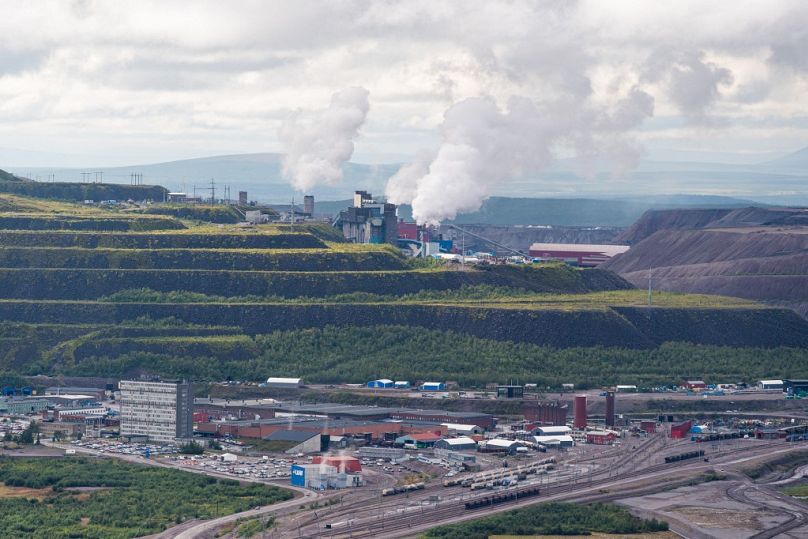
Rare earth minerals aren’t currently mined in the EU and the bloc’s industries are heavily reliant on imports from other countries like China and Russia. It’s no surprise, then, that this discovery and others like it have cheered those looking to cut dependence on outside sources – particularly in the wake of the war in Ukraine.
The company has also promised fossil fuel-free extraction of the minerals as part of the EU’s green transition.
According to Sweden’s Minister for Energy, Business and Industry Ebba Busch, the “EU’s self-sufficiency and independence from Russia and China will begin in the mine”.
More mining could cut grazing lands in two
Karin says the promise of European independence from Russia and China puts the Indigenous population in a difficult position.
The Sámi people are experiencing the consequences of climate change first-hand, and they more than understand the need to mitigate its effects.
“In January, LKAB suddenly launched this idea of a new mine, that they say would save Europe. They would also cut our land, our Sameby in two pieces because it would be impossible for us to graze our Sámi lands.”
She believes that the industry is looking to exploit the green transition for profit, at least in this part of Sweden. Karin says there must be other ways to get rare earth minerals, like reprocessing the 130-year-old waste that is piled up around the iron mine.
“What’s green and what will stop climate change?” she asks.
“Is it to dig out more iron and possibly find more rare earths? Or is it to focus on not polluting more land, destroying more of the fragile ecosystems that you find in the mountains in this part of the EU?”
Indigenous Of Russia, The Silent Victims Of Putin’s War
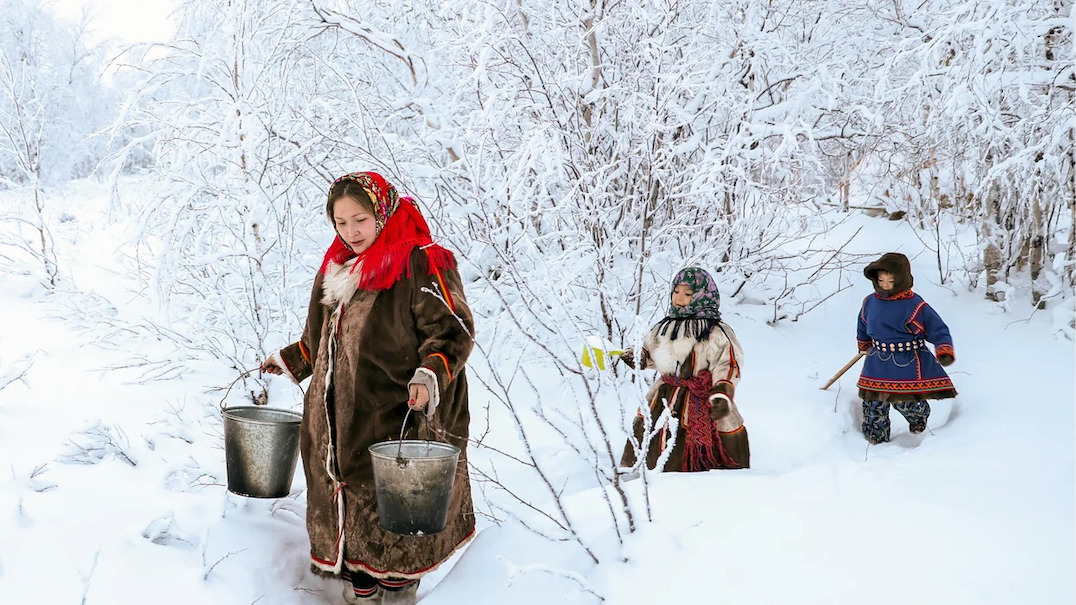
The number of indigenous people in Russia has been declining for decades, but the war in Ukraine has accelerated the trend. Already vulnerable, indigenous groups are more likely to be mobilized and bear the brunt of Western sanctions.
While Russia continues its supposed mission to “denazify” Ukraine, back on home turf its own indigenous people are bearing what may be the heaviest consequences of the Kremlin’s war.
There are 47 indigenous groups living in Russia, some of them with populations of less than a hundred or even a few dozen. The 2021 All-Russian Population Census showed that the number of indigenous people has substantially declined in the last 10 years.
Russian independent news site Vazhnyye Istorii (Important Stories) reports on certain groups that were already on the verge of extinction, and how their situation has gotten even worse after Russia unleashed a full-scale war in Ukraine.
The tragedy for these peoples is not only the disproportionately high numbers of mobilized men, but also the effect of Western sanctions as well as the reduction of state benefits that are now being spent on war.
Extinction risks
According to the 2021 All-Russian Population Census, 67% of indigenous groups have substantially decreased in size compared to the previous census in 2010. Most of them have been decreasing in number throughout the history of modern Russia, but the trend has accelerated in the last decade.
Dmitry Berezhkov, editor of the Russia of Indigenous Peoples website, and a representative of one of the indigenous groups, the Itelmens, says that census data should be treated with a certain degree of skepticism. The government has been known to “draw up” figures for the sake of propaganda or solving government budget tasks. For example, according to the 2010 census, the smallest indigenous group was the Kereks living in Chukotka. There were only four of them a decade ago, but in the 2021 census they numbered 23.
Another example is the Nenets, the largest of the indigenous peoples. In the 2021 census, 49,787 people were recorded as Nenets. “There is a big suspicion that this is a political figure that has been drawn up,” Berezkhov said. “If the Nenets cross into 50,000, they will no longer be considered an indigenous people under Russian law.
Berezkhov said he believe that their number has already grown beyond 50,000 but the authorities have artificially reduced it in order to maintain this indigenous status for them — as they are one of the groups most involved in traditional nature management, reindeer herding and other types of traditional economic activities.
“Removing them would affect the government’s framing of indigenous people,” he explained
However, the state also plays an insidious role. There are, for example, no state benefits that come with identifying oneself as an indigenous person. A different state policy is required, different legislation and basic principles in the country so that the rights of minorities, the rights of vulnerable groups of the population are respected.
Uprooted and assimilated
The authorities consider indigenous peoples to be an objectionable obstacle blocking up these territories: they shouldn’t be there, they’re unnecessary and interfering with the development of the country. This leaves indigenous people with nowhere to earn money, nowhere to live and develop: they are driven out of their own land.
Berezhkov cites the example of the village of Kazas in the Kemerovo region, which used to be a national village where the Shors lived. Most of its inhabitants were engaged in traditional crafts — hunting, fishing etc. In 2012, the Yuzhnaya coal company commissioned a pit in the area. Because of this, the ecology suffered greatly, the Lysaya mountain, sacred to the Shors and whose spirit was considered the guardian of the village and keeping in touch with the world of their ancestors, was destroyed.
In the same year, the company demanded that the residents of the village sell their houses to it in order to develop coal deposits. Under pressure, the residents were forced to move. “The village was destroyed, houses were burned, these families were forced to leave. They moved to the cities, and their children assimilated in the urban environment, they forgot the language,” says Berezhkov.
Men disproportionately drafted
The war in Ukraine has and will continue to hit Russia’s indigenous people hard, most of all because indigenous men are being disproportionately mobilized for the war.
“If losses in war affect large ethnic groups for generations, then for small groups, even the death of several people is already a great tragedy,” Berezhkov says. “If the group is made up of only 200 people, and two young men died in the war, that’s two ethnic families that won’t ever exist,” he laments.
According to Berezhkov, it is the male population that suffers the most in the war and this has a particular influence on the preservation of indigenous peoples. “Men [among representatives of indigenous peoples] are more involved in traditional nature management: their activities allow them to maintain the status of a people who conduct traditional hunting, fishing and forest activities,” the expert explains.
“Women are much more mobile, in many cases they choose more comfort for their children: they move to larger villages, and from larger villages to cities, where it is easier for them to start a family. They marry representatives of other nations and to a greater extent [than men] assimilate.”
Mobilization is taking place disproportionately in the country’s ethnic outskirts, Berezhkov says. The expert cites the example of Gvasyugi in the Khabarovsk Territory — this is a national Udege village. A local television report said that 14 representatives of the Udege people were mobilized from there, and judging by the size of the male population of the village, this constitutes 30% of those in the village who are potentially eligible for mobilization. “This is a gigantic figure, which, of course, does not compute with the data given by Shoigu and Putin [that the mobilization will affect 1% of the population],” says Berezhkov.
“Ethnic activists say that the authorities are purposefully destroying these peoples, calling up as many of them as possible,” continues Berezhkov. “However, this may also be due to the fact that indigenous peoples live in poor suburbs, where people have poverty and loans, and they trust the authorities, they believe they can make money from fighting.”
He explains that indigenous peoples have fewer sources of information than the rest of the population: they watch and trust one state propaganda channel. “And this is natural, because the main concern for them is to hunt, fish and think less about politics,” says Berezhkov.

Economic concerns
This thesis is confirmed by the data of other researchers. Aleksey Bessudnov, Associate Professor at the Faculty of Sociology at the University of Exeter in England, revealed ethnic disparity in the mortality of Russian military personnel in Ukraine. He found out that, for example, a man from Buryatia is 100 times more likely to die in a war in Ukraine than a man from Moscow.
“I am, however, skeptical about the idea that the state deliberately conducts ethnic cleansing,” says Berezhkov. “The state, by and large, does not care about the small indigenous peoples.”
The situation of indigenous peoples is also affected by the economic situation that has developed in the country due to the war. “In remote villages where indigenous people live, this is manifested in the fact that planes no longer fly there so frequently: it has become unprofitable for businessmen to take food to shops, people have to get to larger villages for food themselves. There are problems with medical equipment and modern medicines,” says Berezhkov.
Indigenous peoples were also hit by the withdrawal from the Russian market of Western companies that worked in their places of settlement. “Western business meant Western standards. We, the indigenous communities, could approach these Western companies with demands to comply with the standards of international law in terms of the environment, and the rights of indigenous peoples. Now they have left, the standards are rapidly falling. Indigenous peoples can no longer appeal to international law. And Russian companies do not take into account our interests,” Berezhkov says.
No money, no language
In 2023, the authorities also reduced the amount of subsidies to support indigenous peoples. According to Berezhkov, cuts in spending on indigenous peoples are also due to the war, which is of course affecting the country’s budget dearly.
“This language is our greatest cultural wealth, but, unfortunately, we are losing it.”
“Financial support from the state has always been insufficient,” says Berezhkov. According to him, in Russia, regional authorities use money to support indigenous peoples but only if it comes with benefits for themselves. For example, in the Murmansk region, under a program for indigenous peoples, an apartment building was constructed. But in the end only one Saami family was settled there. The rest of the apartments were given to non-indigenous people on a waiting list.
Support from the state is not enough for the preservation of languages. Berezkhov says that the preservation of such languages is highly dependent on government programs; in foreign countries, unlike Russia, attention is paid to dying languages. For example, in Scandinavia, the Sami language is now being revived. In Russia only 10% of the Sami people use it, according to the census data.
Even Vladimir Putin admitted that little attention is paid in Russia to the preservation of indigenous languages. At the request of a resident of the Udege village of Krasny Yar in Primorsky Krai to introduce teaching of the Udege language, Putin replied: “This [the languages of the minority peoples of Russia] is our greatest cultural wealth, but, unfortunately, we are losing it.”
How Tensions With Russia Are Jeopardizing Key Arctic Research
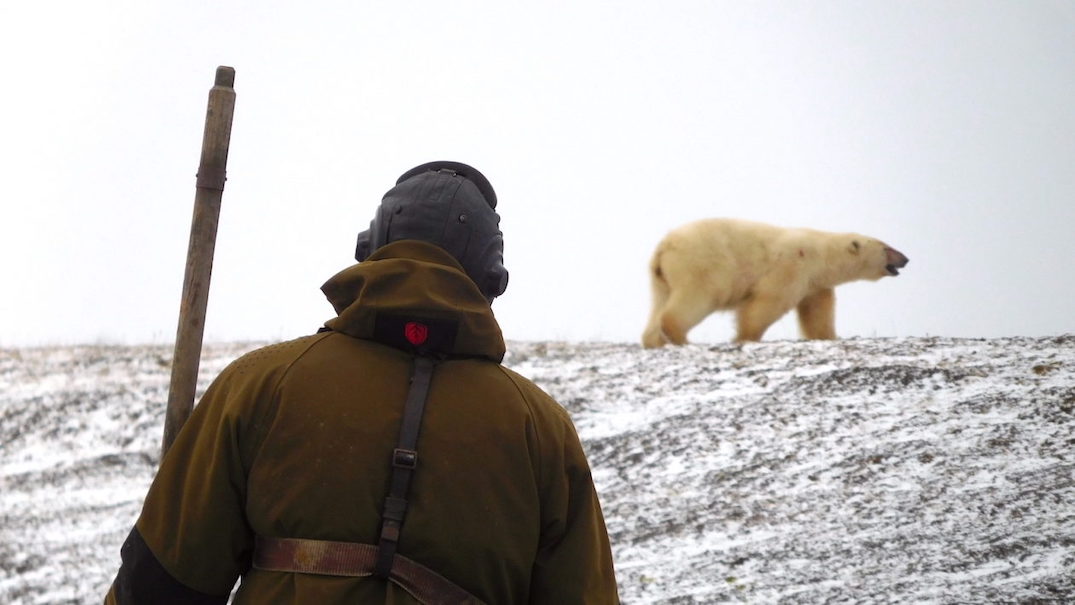
With the Ukraine war, international collaborations with Russia on Arctic research and governance have been strained or broken off. This loss of critical cooperation is compromising efforts to confront mounting environmental risks in the Arctic, from shrinking sea ice to pollution.
Biologist Eric Regehr and his colleagues at the U.S. Fish and Wildlife Service began studying polar bears from the American side of the Chukchi Sea, which stretches from Alaska to Russia, in 2008. But as the region warmed, and the increasingly thin spring sea ice off the Alaskan Coast made helicopter landings unsafe, he knew he would need to find another base from which to survey the health and size of the population.
Russia’s remote Wrangel Island made an ideal alternative: a large proportion of Chukchi Sea polar bears take refuge here during the summer, and the Russian Federation had, in 2000, signed an agreement with the U.S. to protect this population. Collaborating in the field, Russian and American scientists were eventually able to confirm, in 2016, that the population of 3,000 animals appeared to be faring well, despite the rapidly receding sea ice and Indigenous subsistence hunting.
After a two-year hiatus because of Covid-19, Regehr, now with the University of Washington, was eager to return to his research on Wrangel. But when Russia invaded Ukraine last February, his plans abruptly changed. So did those of virtually every government, university, institute, and nonprofit scientist working with Russian colleagues. Suddenly, nearly every international collaborative effort with Russia in the Arctic — from polar bear and whale studies to research on commercial fishing, permafrost thaw, sea-ice retreat, peatland ecology, and wildfires — was on hold.
The cessation of scientific collaboration comes at a precarious moment for the Arctic.
“So much of what we need to know about these impacts is being lost,” Regehr says. “It’s hard to see how we are going to be able to resume the science without the government and non-government funding [for] us and the Russians, and without us being there to work with their scientists.”
The cessation of scientific collaboration comes at a precarious moment for the Arctic. Environmental risks associated with sea ice loss, pollution, and shipping are increasing; Russia and other Arctic states are proposing new boundary lines along the continental shelf that would expand their claims over the Arctic Ocean seabed; and peatlands have been continuing to burn after a year of record-setting wildfires in northern Russia, adding substantially to the nation’s greenhouse gas emissions. (Russia is the world’s fourth-largest emitter of greenhouse gases.) In addition, China is ramping up its economic interests in the Arctic.
“The Arctic has long been a model for optimism and international cooperation,” says Evan T. Bloom, a senior fellow at the Wilson Center, in Washington, D.C., and a former U.S. diplomat engaged for nearly three decades on Arctic governance. “The disruption of cooperation is necessary because of the [Ukraine] crisis, but there can be no progress on pan-Arctic issues without Russian participation.”
Scientists from around the globe have collaborated in the Arctic at least since the Cold War. Three years after the Cuban missile crisis, representatives from the Soviet Union attended the first of many circumpolar meetings on the study of polar bears, which were in serious decline from overhunting. The Soviet Union was a signatory to the International Convention for the Prevention of Pollution from Ships, which went into effect in 1973, and the five-nation Agreement on the Conservation of Polar Bears, which went into force three years later.
The Russians have also been intimately involved with the International Maritime Organization and the World Meteorological Organization, which provides the framework for international cooperation on weather, climate, and water cycles both in the Arctic and around the globe. And they have been a key player in the Arctic Council, the leading intergovernmental forum promoting cooperation among the eight Arctic states. The Council meets regularly — with nations holding two-year rotating chairmanships — to work on issues related to sustainable development and environmental protection.
Now, much of this international collaboration is on pause, partly because the other seven Arctic Council states have suspended communication with Russia. Other projects have halted completely as government scientists and non-governmental organizations in Russia have fled the country, been silenced by Russian authorities, or denied the international funds, expertise, and infrastructure needed to keep their joint work going.
Russia has half the Arctic’s land mass and jurisdiction over most of the Arctic Ocean.
An October 2022 report commissioned by the Finnish Prime Minister’s Office summed up the impact of Russian aggression on international Arctic cooperation by acknowledging that, while conditions may change, “one thing is certain, there will be no return to the pre-war reality.”
The loss of Russia, both as a collaborator and as an active member of the Arctic Council is profound, notes Bloom, because the country has half the Arctic’s land mass, jurisdiction over most of the Arctic Ocean, is home to nearly half of the Arctic’s population, and oversees most of the region’s economic development.
Prior to the war in Ukraine, scientific and diplomatic progress was being made on many emerging environmental issues, including the Agreement to Prevent Unregulated High Seas Fisheries in the Central Arctic Ocean. Most of this region is covered by ice year-round, preventing the possibility of a commercial fishery. But as the ice retreats, fishing countries could eventually move in and wipe out fishery stocks, as happened with walleye pollack in an unregulated area of the Bering Sea in the 1980s. The key element of the Central Arctic Ocean agreement, which takes a science-based approach to fisheries management before permitting commercial fishing, is in peril without Russian scientists verifying data that would form the basis for launching future fisheries.
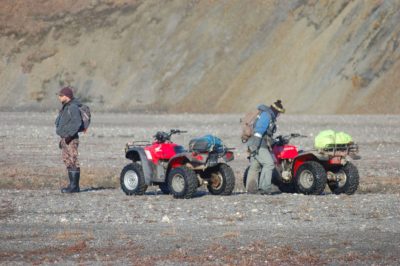
Some Russians did show up at an international meeting on Central Arctic Ocean fisheries that was held in South Korea in November of 2022, says Bloom, who was invited to speak virtually on the significance of the fisheries agreement at the meeting. “But they were low level and without the authority to make decisions about future scientific participation,” he says. “It’s hard to see things moving forward so long as there is war in Ukraine.”
The war in Ukraine has also put a halt to many climate-based collaborations within Russia. Russia has more peatlands than any other country. Carbon-rich, many of these peatlands have been badly degraded by mining, agriculture, forestry practices, and oil and gas development. And climate change has made them vulnerable to wildfires. In 2010, Russia had 30,000 fires in more than 20 regions. Wildfires and peatland degradation currently account for 5 percent of the country’s greenhouse gas emissions.
Following the catastrophic 2010 fire season, the German government offered money and expertise to help restore the hydrological regimes that keep Russia’s peaty bogs, fens, and marshes wet and their carbon sequestered. But on the day that Russia invaded Ukraine, German institutes — including the Succow Foundation — withdrew their support. Just weeks afterward, a Russian bomb in Ukraine likely triggered a wildfire in the forest around the Chernobyl nuclear site, a focus of another rewetting project.
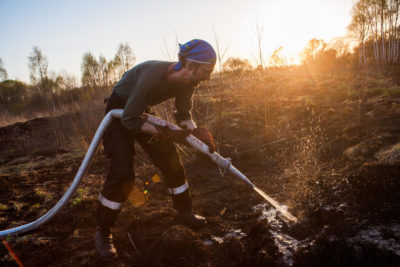
Tatiana Minayeva, a Wetlands International scientist who previously worked as a researcher and scientific consultant for the Russian government, says much progress had been made in Russian peatland restoration before the war broke out. But with little chance of collaborations resuming, she hopes the remaining funds from international donors will go to other peatland sites in Central and Eastern Europe.
Most of Russia’s peatlands are frozen in permafrost, which is thawing faster than permafrost in other Arctic nations. Much of the data on this thawing come from the Germany-based Alfred Wegener Institute for Polar and Marine Research, which in February of 2022 pulled its support from the Samoylov Island research station in Siberia’s Lena Delta. The station can host up to 20 scientists at a time and has been collecting reliable data on permafrost since 1998.
Following Russia’s invasion of Georgia in 2008 and of Crimea in 2014, the Arctic Council found ways of navigating through crises without pausing communications with Russia. And nonprofit organizations with offices in or close ties to Russia helped keep back channels open when the Arctic Council wasn’t willing or able. Following Russia’s annexation of Crimea, for example, the Pew Charitable Trusts persuaded Russia, the U.S., Canada, Iceland, and other countries to meet in Shanghai in 2015 to discuss the proposed Central Arctic Fisheries Accord.
“There is ample opportunity for Arctic governance to get much worse,” says a former diplomat.
But today’s situation is quite different, says Clive Tesar, former head of communications and external relations for the World Wildlife Fund’s Global Arctic Programme. Many of those back channels are now closed or silenced, and now that the seven other Arctic Council states are no longer communicating with Russia, it’s unclear how international collaborations on a non-governmental level can move forward.
The World Wildlife Fund has worked in Russia since the 1980s, when it financed the establishment of the Great Arctic Reserve, the largest nature reserve in Eurasia. Since then, it has been involved in more than 1,000 field projects, many of which led to the protection of more than 200,000 square miles of unique territories, most of them in the Arctic and sub-Arctic regions. “It’s going to be very difficult to get things back on track as this war continues,” says Tesar.
Evan Bloom, who helped to establish the Arctic Council and served as the lead U.S. negotiator in establishing the world’s largest marine protected area, in Antarctica’s Ross Sea, has been through many international crises and notes that the future of Arctic research is “not all gloom and doom.” Multilateral research on the Arctic will continue in Canada, Alaska, Greenland, and in Ny-Ålesund, on Norway’s Spitsbergen Island.

But the Arctic Council is a forum regulated by consensus, Bloom says, and “nothing goes forward there unless all parties agree.” If the situation in Ukraine gets worse, “there is ample opportunity for Arctic governance to get much worse.”
With Arctic Council communications with Russia suspended indefinitely, the seven other Arctic Council states could continue working on plans that don’t involve Russian territory, Bloom says. But that might anger and alienate Russia, preventing its future return.
Even if the Arctic Council did find a way to reconcile with Russia, or to forge a different path forward, it’s hard to imagine the research community returning to pre-war normal, because so many of Russia’s best Arctic scientists have fled the country or are looking for ways to emigrate.
Some, like Olga Shpak, a Ukrainian marine biologist formerly working with the Russian Academy of Sciences’ Severtsov Institute for Ecology and Evolution, gave up her research to volunteer on the front lines to defend her hometown last spring. “My life has changed drastically on February 24th,” she said at a meeting of the Council for the Advancement of Science Writing last October. “My priority is not science, not Arctic, not whales, but people.”
The Humanitarian Crisis Affecting Yanomami Peoples: Bolsonaro’s Catastrophic Legacy in the Amazon
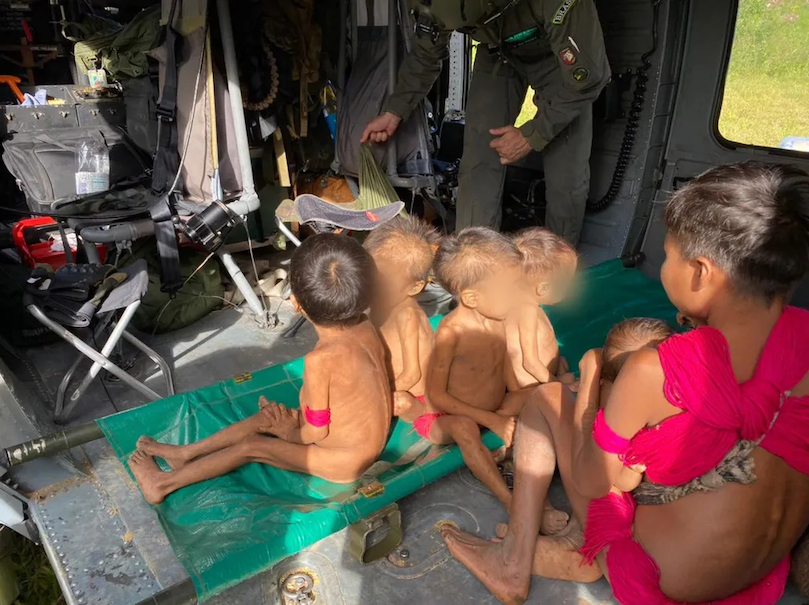
By Edson Krenak (Krenak, CS Staff)
Shocking images have been released over the past few days showing the suffering of Yanomami Peoples in the Brazilian and Venezuelan Amazon. In the third week of January 2023, Yanomami people in Roraima, northern Brazil, were found with severe malnutrition, especially in children. According to the Ministry of Indigenous Peoples, nearly 100 children between the ages of 1 and 4 died in 2022 from malnutrition, malaria, pneumonia, and diarrhea. It is estimated that hundreds more have died in recent years from the same problems, and also at the hands of criminal groups operating on Indigenous lands.
At the beginning of former President Jair Bolsonaro’s reign, numerous Indigenous rights organizations such as Articulação dos Povos Indígenas do Brasil and Cultural Survival informed the Brazilian government about the dire situation of the communities in the region and pushed for urgent action. However, Bolsonaro’s anti-Indigenous agenda ignored and actively worsened the situation by withdrawing federal environmental police from the area, relaxing environmental laws (which facilitated the advance of illegal mining in the region), and dismantling public policies for Indigenous Peoples. The Yanomami situation is shocking and criminal in many humanitarian, moral, and legal aspects.

How to Create an Ecological Catastrophe
The territory of the Yanomami Peoples has been the target of illegal mining since the 1970s. Legal and illegal extractivist activities seek cassiterite, gold, and other ores. Because of this mining activity, the Yanomami, like many other Indigenous Peoples in the region, are exposed to pollution, especially mercury, created by the actions of the land invaders. The negative impact is significant on the rivers, animal, and plant life, as Cultural Survival detailed in a previous article. Several studies show devastating contamination of fish and water causing environmental damage, loss, and risk of extinction of species. The most affected rivers are the Uraricoera, Parima, Igarapé Inajá, Igarapé Surucucus, Mucajaí, Couto Magalhães, Apiaú, Novo, and Catrimani, all of which are essential sources of food for Yanomami and Indigenous Peoples and carry cultural and biological significance.
In the four years of Bolsonaro’s government, at least 570 Yanomami children died, mostly from hunger or curable diseases. These numbers may be even higher due to an intentional blackout of the health data about Indigenous Peoples during this time. This lack of data is part of the complaint filed by many organizations at the International Criminal Court accusing Bolsonaro of genocide of Indigenous Peoples.
The incomplete health reports from January 2023 are frightening; 11,530 cases of malaria have been confirmed in just this month alone. The most affected age groups are those over 50, followed by 18-49 and 5-11. At least 80 percent of children from isolated communities and children across the Yanomami Territories are underweight. Death and other sickening conditions from malnutrition have become more frequent. Last week, the image of a Yanomami woman who died was widely shared on social media by public agents in an act of disrespect toward communities. In the Yanomami worldview, showing images or even an object of a deceased person is considered deeply disrespectful to their spirits; the deceased person’s name also cannot be mentioned, according to her people.
Since 2018, local leaders have filed more than 100 requests for help from the federal government and Indigenous health protection agencies. The requests were ignored, demonstrating clear abandonment by the State. By 2020, mining and deforestation on Yanomami, Munduruku, and Kayapo lands increased 30 percent, one of the sharpest increases in history. In 2021, more than 20,000 illegal prospectors invaded the Yanomami territory.
Lobbyists representing corporations with extractive interests also grew exponentially under Bolsonaro. In November 2022, when the former Secretary of Indigenous Healthcare, appointed by Bolsonaro, was asked about the situation of the Yanomami, he answered: “their health is wonderful.” According to an investigator from the Federal Public Ministry, the same secretariat hid data and omitted information about the Yanomami. The situation has escalated since mining corporations primarily from Canada, the United Kingdom, and Norway have increased their presence in the region, bringing crowds of people seeking gold or job opportunities.
Garimpo, or wildcat gold mining, was also publicly promoted by Bolsonaro. (Rogue and illegal miners are called garimpeiros.) In 2021 in an informal TV interview, Bolsonaro said that his father was a garimpeiro, and “any Brazilian has the right to be as well.” Those words triggered an unprecedented invasion of garimpeiros, especially in Yanomami, Munduruku, and Kayapó lands. On Yanomami reservation land in the Amazon rainforest, land grabbing increased by 46 percent in 2021 to 8,085 acres. In the past year, some 40 to 80 small planes and helicopters have been circulating in Indigenous territories daily, carrying prospectors and tons of gold.
Mining destroyed a record 125 square kilometers of the Brazilian Amazon last year, according to data from Superintendência de Desenvolvimento da Amazônia Legal (SUDAM – Amazonia Legal Institute). In other river areas where hydroelectric dams, such as Belo Monte, were built, a legacy of social problems were left behind; because those projects do not bring development or welfare for the thousands of workers and communities in the region, when the projects end, many are left unemployed, houseless, and without money or care. This dark scenario creates an opportunity for drug lords and other facções criminosas (criminal groups) to take over the wildcat mining activities. Extractive activities are well known in Brazil for bringing violence, sexual harassment, drugs, fear, and terror to Indigenous communities. The State’s abject failure to protect Indigenous rights has contributed to the increase of murders of Indigenous Peoples and the destruction of the environment.
A recent report by the Federal Police shows that military personnel, government agents, and even FUNAI were corrupted by illegal miners in a murderous and genocidal corruption scheme. On June 5, 2022, Brazilian activist Bruno Pereira and British journalist Dom Phillips were murdered during a boat trip through the Vale do Javari, the second largest Indigenous area in Brazil, while conducting an investigation requested by Indigenous communities to broadcast their situation and denounce the threats they were suffering.
Even though State and corporate projects in the region, like dams and mining, have been an ongoing activity in the Amazon, never before has it taken place with such intensity and acceleration. In the last five years under Bolsonaro, there was a clear agenda for deforestation, mining, and exploitation of the ecosystem in detriment to so many Indigenous Peoples.
Necropolitics
The Yanomami humanitarian catastrophe is one of the many horrifying examples of Bolsonaro’s necropolitics, a term coined by the African historian Achille Mbembe to describe the use of political power to replace life for death or to subjugate lives to austerity, immiseration, merciless exploitation of the ecosystem, and eventually death. The Federal Public Ministry, together with the newly created Indigenous Peoples Ministry, recently issued a report denouncing Bolsonaro’s public policies and environmental protection bills that were blatantly incompetent and designed to fail. As one example, the report shows that 400 illegal mining points were found in the Yanomami region as a result of an investigation by the federal police together with Indigenous Peoples. The officials responsible for monitoring the area only checked nine of these points in a short period of time, which is not considered standard or acceptable by the mining and environmental monitoring agency itself.
The report also shows that Bolsonaro pressed for numerous bills to legalize mining on Indigenous lands. Starting in 1992, when he was still a congressman, Bolsonaro proposed a bill to clear the Yanomami lands and remove Indigenous Peoples from their homelands. It is important to note that mining is forbidden on Indigenous lands by the Constitution. The proposed legislative changes spurred protests from Indigenous and environmentalist organizations.
In 2020, numerous organizations from all over the world wrote letters to Bolsonaro denouncing the health crisis and lack of security for Indigenous Peoples in the country. Cultural Survival’s letter received an official response saying they were being taken care of, but there were no details of the actions to ensure the physical integrity of vulnerable populations. No further communication was received.
Cultural Survival and other organizations continue to find it difficult to contact and support many Indigenous communities in Brazil because of State mismanagement, bureaucracy, unexplained slowness in banking transactions, and lack of internet access in the communities, among other factors. NGOs in Brazil similarly have faced many difficulties in raising funds and visiting Indigenous communities, particularly since Bolsonaro took office in 2019. Armed criminal groups that set up camp around Indigenous lands have posed an additional risk not only to Indigenous Peoples but to anyone else who attempts to visit the areas.
The Amazon rainforest has been breached and destroyed for years. Studies show that it takes a long time for biomes to recover, and some parts of the Amazon might never regenerate or recover. The environment in Brazil is extremely diverse and rich, and the complexity of any action to undo the damage is immeasurable. Areas that were mined in the 1960s and ‘70s have not yet recovered—not even the riparian forest along the rivers, despite the work of Indigenous and environmental organizations. The rivers are contaminated, increasing the crisis not only for the Indigenous people living in the forests, but for entire local communities and neighboring towns that live in the area.
A Ground for Hope
Cultural Survival recently spoke to the country’s new chief of the Special Health Secretariat for Indigenous Peoples (SESAI) and secretary for Weibe Tapeba Indigenous Peoples, a Keepers of the Earth Fund grant partner in Brazil. He said that when he arrived in Yanomami territory, it looked like a “concentration camp, a war zone. Bolsonaro and the Brazilian State completely abandoned these people. I’m terrified,” he said. The new chief, along with the Ministry of Indigenous Peoples, is concentrating all efforts and resources to serve the Yanomami. Several villages will have to be relocated to areas where there is food, safety, and clean water.
Due to the complexity of the situation, the size of the territory, and the resources available, the Indigenous Peoples of the Amazon need international support. Those behind this unprecedented humanitarian crisis have to be held accountable, including large corporations.
Cultural Survival has recommended to international human rights bodies such as the Committee on the Elimination of Racial Discrimination that Bolsonaro and his administration must be held accountable for what happened to the Yanomami and other Indigenous Peoples in the country, as well as for the pollution of rivers and forests. It is beyond genocide: it is ecocide. Cultural Survival urges Karim Khan, chief prosecutor of the International Criminal Court, to consider the international petition from Indigenous Peoples’ organizations to investigate and punish Bolsonaro for his crimes. It will bring justice for centuries of violence and violations of human rights committed against Indigenous Peoples.
Many European Union countries, the United Kingdom, China, Canada, and the United States have financed this ecocide by purchasing wood, importing gold, extracting other metals, and trafficking numerous of the region’s animal species. The Yanomami humanitarian crisis is a catastrophe that impacts the forest, the planet, and threatens the lives of all of us.
New Year, New Board Members
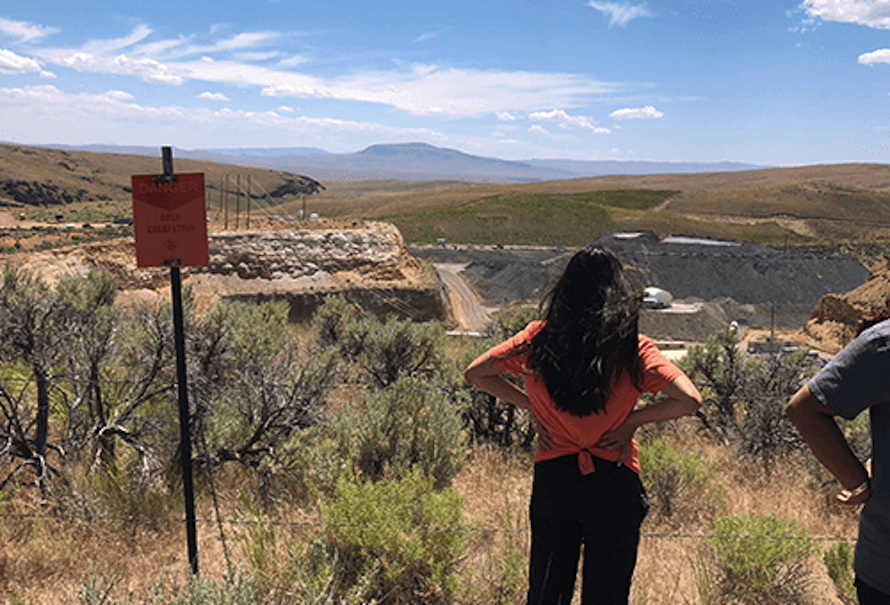
As we welcome the new year, we are thrilled to welcome three new board members:
Community Sector: Pavel Sulyandziga, Russia
Pavel is an Indigenous leader and human rights activist from the Bikin River valley in Siberia. He is dedicated to protecting indigenous communities, whose rights are often violated by business. Pavel has a PhD in Economics and is President of the International Indigenous Fund for Development and Solidarity “Batani” (Batani Foundation). He’s currently a Visiting Scholar at Dartmouth College (US) and at Law School University of Maine and was a member of the United Nations Permanent Forum on Indigenous Issues (2005 – 2010) and Member of the United Nations Working Group on Business and Human Rights (2011 -2018). He joins Meshack Mbangula of Mining Affected Communities United in Action (MACUA) in representing the Community Sector.
Labor Sector: Meg Gingrich, Canada
Meg Gingrich is Assistant to the National Director of United Steelworkers (USW) Canada. For ten years she’s been on staff at USW Canada’s National Office, first as a researcher and now as the Assistant to the National Director. In that position she’s the senior administrative and policy advisor to the USW in Canada, with lead responsibility on issues relating to trade, industrial policy, and strategic planning. She’s also the central liaison on these issues with the leadership of USW United States. Meg is also the President of Blue Green Canada, which was co-founded in 2008 along with Environmental Defence as a joint labour-environment-community coalition. She joins Glen Mpufane of IndustriALL Global Union in representing the Labor Sector.
Purchaser Sector: Claudia Becker, Germany
Claudia is BMW Group’s Expert on Raw Material Strategy and Sustainable Supply Chain Management. Claudia has been working for the BMW Group since 2012 in operational and strategic purchasing functions. In 2016 she joined BMW’s responsible sourcing team with a focus on due diligence in mineral supply chains. Claudia works closely with supply chain partners and represents BMW in various international and cross-industry initiatives, such as Drive Sustainability, RMI and the GBA. Before joining the BMW Group, Claudia worked in the sector of international development cooperation including for the Deutsche Gesellschaft für Internationale Zusammenarbeit (GIZ) in Cambodia on sustainable urban development. Claudia has an academic background in Geography from the University of Bonn with a focus on development cooperation, sustainability, and urbanism. Claudia joins J.J. Messner de Latour of Microsoft in representing the Purchasing Sector.
As we welcome Claudia, Meg, and Pavel to the IRMA board, we reflect with appreciation on the invaluable contributions of those who have served IRMA’s governance since its founding: Dewa Mavhinga, Mike Kowalski, Anisa Kamadoli Costa, Samara Rudolph, Joan Krajewski, Ephi Banaynal dela Cruz, Susan Posnock, Joe Drexler, Mark Rowlinson, Alan Knight, Nuskmata, Larson Bill, Loretta Williams, and many more to whom we owe deep appreciation for their work.
New Year, Same Unique Governance Model
While there are other multi-stakeholder, extraction-related and metals-related standards, IRMA’s governance model is unique: equal governing authority shared between six sectors with an interest in mining. For any board vote, if the two representatives from any given sector oppose a motion, the vote fails even if all other board members are in support. To our knowledge, the IRMA board is the only place in the world where communities, labor, and civil society have an equal voice alongside mining companies and other multinational corporations.
Looking Forward
2023 will be an important year in advancing IRMA’s vision: a world where the mining industry respects the human rights and aspirations of affected communities, provides safe, healthy and supportive workplaces, minimizes harm to the environment, and leaves positive legacies.
Our work to create financial value for mines independently assessed against the world’s most robust mining standard will take a major leap forward. Audit reports for at least ten mine sites will be released in 2023, including the first lithium mines assessed in IRMA. 2023 will also see the IRMA Standard expand to include exploration and development, before mines are operating, and also mineral processing operations, as well as updating the current Standard for active mining operations.
We do this work to integrate learning from the first mine audits, and to create value for an evolving definition of “best practices”, shared across stakeholder sectors, for environmental and social responsibility. As with all of IRMA’s work, this is only possible through the engagement of all affected stakeholders and we welcome your engagement.
New Board member at IRMA
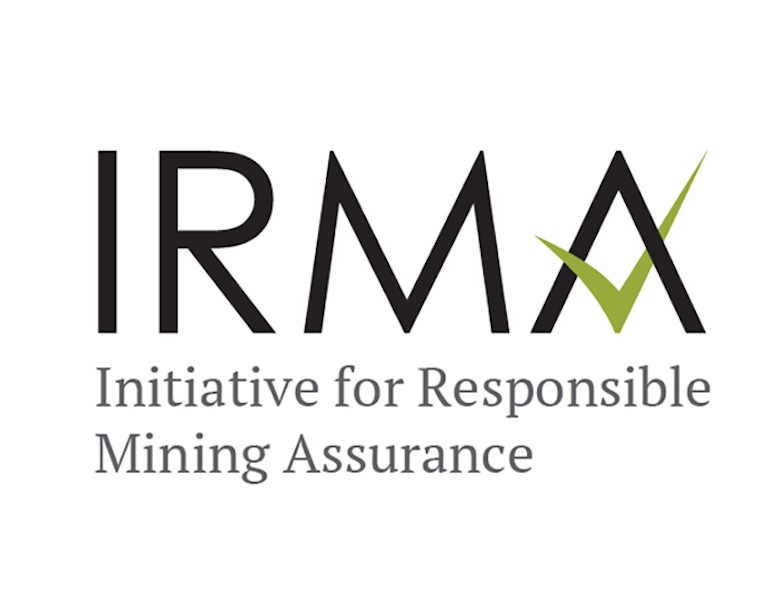
At the end of 2022, Batani Foundation President Pavel Sulyandziga became a member of the Board of The Initiative for Responsible Mining Assurance (IRMA), an organization that has developed some of the highest standards for indigenous rights. This organization brings together representatives of different, often conflicting parties – business, trade unions, human rights activists, indigenous peoples, environmentalists. For example, the members of the organization are – 1. businesses – Tesla, BMW, Mercedes, Ford, Microsoft, AngloAmerican, Tiffany and others, 2. environmentalists – Earthworks, IUCN, Fauna and Flora International, Rivers without Borders, 3. human rights organizations – Human Rights Watch, Society for Threatened People. The Batani Foundation will represent indigenous peoples in IRMA.
We hope that the cooperation between the Batani Foundation and IRMA will help in protecting the rights of indigenous peoples, and that Pavel Sulyandziga’s participation in the work of IRMA as a member of the IRMA Board will be successful and productive.
Diverse coalition urges federal appeals court to protect Oak Flat
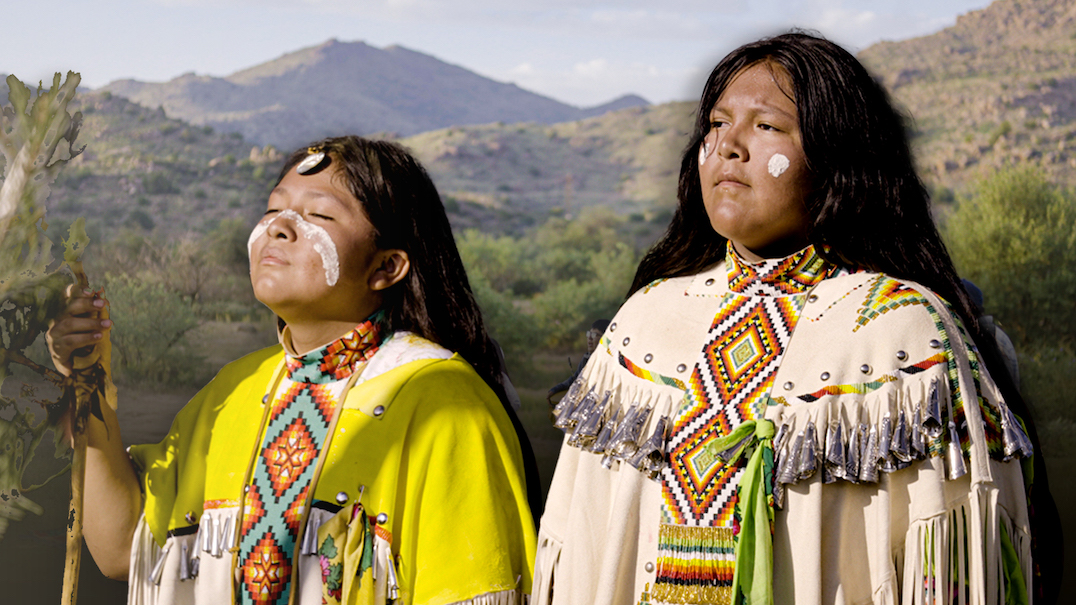
WASHINGTON – A diverse coalition of religious groups, native tribes and legal experts filed half a dozen friend-of-the-court briefs yesterday in Apache Stronghold v. United States, asking a federal appeals court to protect Oak Flat, the spiritual lifeblood and sacred site of the Apache people in Arizona. The United States Court of Appeals for the Ninth Circuit recently agreed to take a closer look at the case in March 2023. If the court doesn’t intervene, the government will give this historically protected land to a mining company that will swallow the site in a massive crater, ending Apache religious practices forever.
“The diverse voices calling for protection of Oak Flat remind us that the government’s threat to destroy Oak Flat is a threat to destroy religious freedom for people of all faiths,” said Dr. Wendsler Nosie, Sr. of Apache Stronghold. “We hope these voices will help the court understand that Oak Flat deserves no less protection than the many historical churches and other religious landmarks the government protects from coast to coast.”
Since time immemorial, Western Apache and other native peoples have come to Oak Flat for essential religious ceremonies that cannot take place anywhere else (video). The site is on the National Register of Historic Places and has been protected for decades. But in 2014, the government ordered Oak Flat to be given to Resolution Copper, a foreign-owned mining company that plans to turn the sacred site into a two-mile-wide and 1,100-foot-deep crater. Apache Stronghold—a coalition of Apaches, other Native peoples, and non-Native allies dedicated to preserving Oak Flat—sued the federal government to stop the destruction of Oak Flat.
Apache Stronghold lost their initial appeal to the Ninth Circuit after a three-judge panel decided that the land-swap deal did not violate their free exercise of religion. The court announced in November that it will rehear the case “en banc”—in front of a full panel of eleven judges—giving Apache Stronghold a second chance to win protection for Oak Flat.
Highlights from the friend-of-the-court filings in Apache Stronghold v. United States include:
- Tribal Nations and Tribal Organizations arguing that this case will set vital precedent for tribal nations across the continent.
- A diverse array of religious organizations—including the Church of Jesus Christ of Latter-day Saints, Seventh-day Adventists, the Islam and Religious Freedom Action Team of the Religious Freedom Institute, and the Christian Legal Society—highlighting how the government’s position in this case would gut civil rights protections for people of all faiths;
- The Mennonite Church USA explaining how the government can manage federal lands while still providing full protection to Native American religious practices;
- Religious liberty law scholars arguing that the plain language of federal civil rights law requires protection of Oak Flat;
- The Sikh Coalition noting that the legal standard for judging Native religious liberty claims should be consistent with that for land use and prisoner claims;
- The Jewish Coalition for Religious Liberty and Protect the First asking the court of appeals to reconsider its narrow, inflexible approach toward Native American sacred site cases.
Polling from last year shows that nearly 89% of Americans favor protecting Native American sacred sites on federal land. Strong support for these protections outnumbered strong opposition by a ratio of nearly 20 to 1. Americans overwhelmingly agree that the government should not interfere with the longstanding religious traditions of Native groups.
“It is encouraging to see a diverse coalition of tribes, religious groups, and scholars stand up in defense of the religious freedom of Western Apaches,” said Luke Goodrich, vice president and senior counsel at Becket. “It is long past time for our nation to ensure that Native American religious practices receive the same respect and protection enjoyed by all other faiths.”
The Ninth Circuit Court of Appeals will hear oral argument in this case at its Pasadena courthouse during the week of March 20, 2023. A specific day and time are yet to be determined. In addition to Becket, Apache Stronghold is represented by attorneys Michael V. Nixon and Clifford Levenson.
How Russia Implements the Free, Prior and Informed Consent Principle

On November 12, in the village of Lovozero in the Murmansk region, a public discussion was held on a project for the reorganization of the Seidyavvr nature reserve.
The Seidyavvr Nature Reserve
The Seydyavr State Nature Reserve — with a total area of 17,972 hectares — was founded in 1982 by the decision of the Executive Committee of the Murmansk Regional Council of People’s Deputies in order to preserve the natural environment, natural landscapes and cultural sites of the Murmansk region.
Valuable game animals and their habitats are protected on the reserve, along with important historical and cultural sites of the Saami people. Located within the boundaries of Seydyavr is Lake Seydozero, a unique landmark of the Murmansk region.

Three forms of whitefish inhabit the lake and spawn at different times of the year, ensuring a steady supply of fish. On the slopes of the mountains surrounding the lake there are unique mineral deposits. Certain endangered lichens, mosses and vascular plants grow here.
The Sacred Lake of the Saami People
In the Seydozero valley, there are several sites of historical and religious significance to the Saami people. Saami legends say that a giant named Kuyva lived in ancient times in the Lovozero tundra. Kuyva robbed and killed the Saami, for which he was destroyed by the Saami pagan gods – “burned by lightning that struck from the waters of the lake.” On a cliff face next to Lake Seydozero, in the coloring of the rocks, there appears a huge humanlike figure which, according to legend, is the imprint of Kuyva’s burned body. The imprint is known as a “seyd” and is formed by cracks and aquifers of natural origin in the rock of the Kuyvchorr plateau facing the lake.
Translated from the Saami language, Kuyva means “old man.” “Kuyva at Seydozero enjoys special honor from the Seydozero Lapps,” the ethnographer Vladimir Vize (1886–1954) once wrote. “Sailing on a karbass past Kuyvchorr, the Lapps are afraid to shout loudly or swear, for fear that the ‘Old Man’ will be angry. The Lapps avoided dirtying the water in Seydozero because ‘the old man doesn’t like it, and otherwise he won’t give fish.’” While the 74-meter Kuyva seyd is the most famous attraction at Seydozero, there are two other seyds in the area.

In accordance with decree number 894-PP of the regional government of Murmansk Oblast, dated December 6, 2021, the following is prohibited on the territory of the nature reserve: the withdrawal of land from the fund of protected forest; diverting water; any felling of trees, with the exception of thinning young forests and selective sanitation cuttings; the exploration and development of mineral deposits; the allocation of protected land for any type of use, any change of land category or other activities that contradict the goals of the reserve and cause harm to the natural environment.
In 2001–2012 an additional study of the territory of the reserve was carried out, on the basis of which it was proposed to include the Seydyavr reserve in the Khibiny National Park being designed at that time, specifically in the area known as Luvyavr. However, when Khibiny was finally created in 2018, Lovozero was not a part of it.
Why Was the Nature Reserve Reorganized?
On March 3, 2022, the regional government of Murmansk Oblast approved a new concept for the functioning and development of its network of specially protected natural areas, in which it was planned to change the special protection regime of Seydyavr. The regional government decided that instead of a nature reserve, they needed a natural park.


Pic. 1. The planned Seydyavr natural park. Image: INEP KSC RAS.
To justify the reorganization of the Seydyavr state nature reserve into a national park, the Institute of North Industrial Ecology Problems, which is part of the Kola Scientific Center of the Russian Academy of Sciences, conducted a comprehensive environmental survey of its territory. The result of their work was the research report “Survey and justification for the reorganization of the state nature reserve of regional significance Seydyavr into a nature park of the same name.”
The authors of the study write that in recent years, uncontrolled recreational pressure on the territory has increased, the number of forest plots leased for recreational purposes has increased without taking into account the conservation value of these sites or their role in public recreation, and the volume of geological exploration has increased. The report goes on to say that “these trends may have a significant impact in the coming years,” and the environmental and recreational significance of the Lovozero mountain range will be largely lost.
Therefore, it is necessary to change the category of the Seydyavvr reserve into a nature park, which will allow for the functional zoning of the protected area, expand its boundaries, include additional territories “with intact natural communities,” remove “unjustified restrictions for the development of nature tourism,” and provide “necessary regulation of the growing flow of tourists.”
The authors of the study did not hide the motivations prompting this reorganization. They are specified in chapter 2 of the document “Goals and reasons for the reorganization…”
- inclusion of intact natural communities within the boundaries of protected areas and ensuring the protection of a complex of plant and animal species associated with them, including those listed in the Red Books [i.e. endangered species lists] of Russia and / or the Murmansk region;
- changing the type and regime of existing protected areas, zoning: removal of unjustified restrictions for the development of nature tourism, the regime for each of the functional zones must correspond to the tasks that this zone performs;
- formation and regulation of tourist flows in the territory: visits by a large number of people should not lead to the destruction of ecosystems and the destruction of natural and historical objects and complexes;
- ensuring the sustainable functioning of the principal employer and economic driver of the Lovozero district — the Lovozero mining and processing plant.
Looking at a map of the planned natural park superimposed on the map of the existing reserve, it seems that the initiators of the reorganization plan to significantly increase the territory of the protected area.

However, upon careful study of the attached project maps, it becomes clear that the actual specially protected natural areas, i.e. the zones intended “to preserve the environment in its natural state with the complete exclusion of economic impacts,” will be only a small part of the current Seydyavr reserve (see the map in Fig. 3 below — highlighted in dark red).
At the same time, according to the organizers, almost half of the planned natural park should be a so-called recreational zone, where the regional government wants to develop tourism (highlighted in light green in Fig. 3). The recreational zone will include the whole of Lake Seydozero, on the banks of which the Kuyva seyd is located.

Not the First Try
This is not the first attempt by the Murmansk Oblast regional government to expand the tourist (recreational) potential of the reserve. Several years ago, the leadership of the regional ministry of natural resources and ecology, together with two other organizations — the Clean Seas International Environmental Fund and LLC Made in the Arctic — appealed to the federal Ministry of Natural Resources and the Arctic Council with a request to support for a project to reconstruct an ancient Saami settlement and turn it into an educational cultural and environmental center. The organizers wanted to request about a million euros from the Arctic Council for the implementation of this project.
Some Saami leaders spoke out against the initiative to develop tourism at Lake Seyodozero, which is sacred to the Saami people. Several appeals were sent to the federal Ministry of Natural Resources and the Arctic Council, including from the Aboriginal Forum — an informal association of experts and leaders of public organizations of the indigenous peoples of the North, Siberia and the Far East — and from the Saami Heritage and Development Foundation with a request to postpone the decision on the implementation project prior to separate consultations with the Saami community.
After the foreign participants of the Arctic Council began to ask uncomfortable questions, the authorities of Murmansk Oblast organized public consultations in Lovozero and even enlisted the support of representatives of official Saami organizations loyal to the Russian authorities. But in the end, the project did not receive funding from the Arctic Council and stalled.
However, the new initiative of the Murmansk officials shows that they have not abandoned the idea of turning the Saamis’ sacred lake into a tourist attraction.
The Lovozero Mining and Processing Plant and Military Electronics
Another reason for the reorganization of the reserve, which is directly indicated by the authors of the aforementioned study meant to justify the project, is to “ensure the sustainable functioning” of the Lovozero mining and processing plant. It is not entirely clear how this can be reconciled with the goal of environmental protection, for which specially protected natural areas are normally created.
According to the Federal Law on Specially Protected Natural Areas – “specially protected natural areas are plots of land, water surfaces, and the airspace above them, where natural complexes and objects are located that have a special environmental, scientific, cultural, aesthetic, recreational or health significance, which are withdrawn by decisions of the state agencies wholly or partly from economic use and for which a special protection regime has been established.” Note that this law has nothing to do with providing assistance to mining enterprises.
According to the proposed zoning of the new nature park, a significant area is going to be allocated to a so-called “special nature protection zone” and a “special zone of traditional economic use” (highlighted in pink in Pic. 3, as well as the striped area in the northwestern or upper left corner). The attached draft regulations for the new park propose allowing subsoil use in these zones.
The Lovozero Mining and Processing Plant LLC is a Russian producer of raw materials for the production of rare and rare earth metals, primarily loparite concentrate. The enterprise is a mining and processing complex, consisting of an underground mine and a processing plant.
Rare earth and rare metals serve as raw materials for innovative technologies. The volume of production and consumption of these metals is an indicator of the development of an industry as a whole and its innovative component in particular. Rare earth metals are widely used in the production of optics, solar cells, capacitors, electronics, special alloys (super hard, heat-resistant, corrosion-resistant alloys), and semiconductors, as well as in the nuclear industry and other innovative and high-tech industries. They are also critical raw materials for the defense industry.
Russia has enormous reserves of rare earth metals, but most of the deposits are difficult to access and lack the necessary infrastructure for their development. Lovozero, however, has large alkali deposits in a favorable geographic position.
In November, the independent Russian media outlet Novaya Gazeta published a major investigation into the nationalization in Russia of a significant number of attractive assets, which have subsequently ended up under the control of companies close to the Russian authorities. According to Novaya Gazeta, the privatization of the Lovozero plant has been declared invalid, and the plant is to be managed by the state nuclear energy corporation Rosatom.
Whether or not the nationalization of the Lovozero plant is related to Western sanctions — and to the resulting shortage of electronic components needed by Russia, including for the production of weapons — is unknown. But some experts claim that at present the Lovozero plant is the only supplier of raw materials for the rare earth metals niobium and tantalum in the Russian Federation, while “against the backdrop of the rapid severance of external relations with the West, Russia urgently needs to organize its own production of permanent magnets, including for the needs of portable military electronics.”

And so questions remain unanswered about the reorganization of the reserve into a nature park. How did the need to ensure “the sustainable functioning of the principal employer and economic driver of the Lovozero district” become one of the official goals of the reorganization? Is this decision related to Western sanctions and the shortage of chips and electronics, as well as the “necessity” of continuing Russia’s “special military operation” against Ukraine?
And most importantly — why is the reorganization of the reserve necessary at all? If changes are necessary, is it possible to consider other alternatives and introduce them into the current regulation on the reserve?
Concern for Indigenous Peoples?
Although ensuring the rights of the Saami population is not the main goal of the reorganization, according to the authors of the aforementioned study, among the goals and objectives are:
- “the preservation of the original habitat, traditional way of life, economic activity and crafts of the indigenous minority people of the North — the Saami”
- “the preservation of the natural conditions for the conduct of economic activities and crafts of the indigenous minority people of the North — the Saami, including fishing, in order to ensure the traditional way of life and the implementation of traditional economic activities of representatives of the indigenous small people of the North the Saami (hereinafter referred to as traditional fishing)”
- “ensuring the preservation of sites of historical and cultural value”
To this end, it is assumed that “within the framework of the management of the nature park, the managing agency should take into account the vital interests of the Saami indigenous people of the North in matters of the protection and rational use of natural resources and the preservation of their original habitat within the boundaries of the nature park.”
Representatives of the local Saami have already had conflicts with the leadership of the existing reserve. For example, Saami activist Andrey Danilov has written that in 2017, a Saami family was not allowed to visit the sacred Lake Seydozero while park employees freely let tourists through. Subsequently, the management of the reserve clarified its position — organized and paid tourists have the right to visit the territory of the reserve on snowmobiles, while the Saami also have the right to visit their sacred places, but only on foot.

All of the above points in which the initiators of the reorganization show “concern” for the indigenous people of Murmansk Oblast, however, are already listed in one way or another in the regulations on the existing reserve:
- “the preservation of the original habitat and traditional way of life of the Saami people”
- “the preservation and development of the original culture of the Saami people”
- “the protection of the original habitat and traditional way of life of the indigenous Saami people, the preservation and development of the original culture of the Saami people, including:
- a) conducting traditional environmental management by representatives of indigenous peoples;
- b) the revival of previously existing types of traditional environmental management in this territory;
- c) ensuring the safety of sites of historical and cultural heritage, including places of worship, places of ancient settlements of cultural, historical, religious value;
- d) ensuring the use of objects of historical and cultural heritage within the reserve in accordance with their purpose;
- e) the revival and development of folk crafts, the production of souvenirs and artistic and decorative products.”
Whether or not there is a guarantee that the directorate of the new nature park will have a better attitude towards the rights of the Saami than the old directorate of the reserve is also an open question.
“Free”, “Prior” and “Informed” Consent?
Recently, the Russian authorities and propagandists under their control have been aggressively promoting internationally the idea that Russia takes very seriously the need to obtain Free, Prior and Informed Consent (FPIC) from indigenous peoples. Several months ago, Norilsk Nickel implemented a project to obtain FPIC from residents of the Tukhard settlement (Taimyr, Krasnoyarsk Territory) in order to evict them from the industrial zone of the oil and gas company Norilsk Gazprom, and it was widely advertised at various international platforms.


Participants of the Eastern Economic Forum Andrey Grachev (left), Vice President for Federal and Regional Programs of Norilsk Nickel, and Grigory Ledkov (right), member of the Federation Council of the Russian Federation, President of the Association of Indigenous Minorities and the Far East of the Russian Federation; Andrey Grachev and Igor Barinov, head of the Federal Agency for Ethnic Affairs of the Russian Federation. Vladivostok, September 2022. Photo: Norilsk Nickel press office
At the Eastern Economic Forum held in Vladivostok in September, Andrey Grachev, Vice President of Federal and Regional Programs at Norilsk Nickel, said that FPIC is “a part of our corporate culture.” The head of the Federal Agency for Ethnic Affairs, Igor Barinov, praised the company’s cooperation with the indigenous peoples of Taimyr even more highly: “Their corporate project to support the indigenous peoples of the North is probably one of the best in the world, and there may be nothing else like it.”
Antonina Gorbunova, a member of the UN Expert Mechanism on the Rights of Indigenous Peoples, Executive Director of the International Public Organization of the Indigenous Peoples Union, presenting the same case on the implementation of the FPIC principle in Taimyr at the meeting of the UN Permanent Forum on Indigenous Issues in New York in May this year, noted that “FPIC is not only a result but, no less importantly, a process. A process of building relationships of trust, a process aimed at ensuring that the voice and opinion of indigenous peoples in the development and implementation of programs and projects should be heard and fully taken into account.”
The member of the UN Permanent Forum on Indigenous Issues from Russia, Alexei Tsykarev, said in an interview of the project implemented by Norilsk Nickel in Tukhard that “if this project is not included in textbooks on jurisprudence, then it will definitely be included in studies on how FPIC is developing in the world.”

Participants of consultations within the framework of the FPIC procedure in Taimyr (from left to right): Antonina Gorbunova, Vasily Zakharov (Advisor to the Deputy Director for Regional Policy and Corporate Projects of the Norilsk Nickel Company), Mikhail Todyshev (Head of the public movement Council of Elders of the Shor People of Kemerovo Oblast), Alexey Tsykarev
These are just a few examples, but there are hundreds of such publications online about Norilsk Nickel and the “Voluntary, Prior and Informed” Consent of Indigenous Peoples. Thanks to Russian propaganda and Norilsk Nickel’s international PR campaign, the resettlement project for Tukhard residents has become a key project for Russia as part of its chairmanship of the Arctic Council.
Much less is said during such public presentations about the fact that the residents of the village did not have the opportunity to make any decision other than “voluntary” resettlement, since, in accordance with amended Russian legislation, permanent residence in the industrial (sanitary) zones of such enterprises has been prohibited.
In light of all this, the public discussions in Lovozero are a clear example of how such procedures are actually carried out in Russia. No one, of course, makes a separate agreement with the indigenous peoples. Everything is done within the framework of procedures determined by law, and indigenous peoples may or may not participate in public discussions.
Due to the remoteness of some settlements and poor communications, indigenous peoples most often learn about such discussions after the fact, when all decisions have already been made, and heavy equipment has already begun to work on their traditional lands.
But let’s return to the reorganization of the Seydyavr nature reserve. On October 19, the regional Ministry of Natural Resources, Ecology and Fisheries in Murmansk Oblast published an announcement that it would hold public discussions “in order to ensure the participation of citizens, public associations and non-profit organizations, as well as to take into account public opinion.” The discussions took place in the village of Lovozero on November 12, and proposals and comments from the public, including from the Saami, were accepted until November 18.
But how, in such a short time, could unprepared listeners, including Sami reindeer herders and fishermen, understand a rather complex, technical, 170-page document, conduct an internal discussion, develop their position and prepare well-founded proposals? The question is rhetorical.
This is how they implement the harsh Russian FPIC.
Dmitry Berezhkov, Editor-in-Chief of Indigenous Russia
Appendices:
- November 2022 Cadastral report on specially protected natural areas the state natural reserve of regional significance “Seydyavr”
- October 2022 report on research on the topic “Survey and justification for the reorganization of the state nature reserve of regional significance “Seydyavr” into the natural park of the same name.” Book 2. Materials of a comprehensive environmental survey of areas of the territories, justifying the change in the special protection regime of the state natural complex reserve “Seydyavr” (change of category, functional zoning, area and boundaries)
- May 2017 Andrey Danilov demands free access to Seydozero
- May 2017 The Saami were forbidden to visit a sacred place!!!!
- March 2017 Letter from the Deputy Minister of Natural Resources and Ecology of Murmansk Oblast O. A. Nosareva to E. Konoplyanko, the Deputy Secretary of Aboriginal Forum, an informal association of experts and leaders of public organizations of indigenous peoples of the North, Siberia and the Far East, on the implementation of the project “Reconstruction of the settlement of the ancient Saami and the creation of a cultural and educational environmental center on its basis” in the Lovozero district of Murmansk Oblast
- March 2017 The Saami opposed the reconstruction of the ancient settlement on Lake Seydozero
- March 2017 Minutes of public consultations on the implementation of the project “Reconstruction of the settlement of the ancient Saami and the creation of a cultural and educational environmental center on its basis” in the Lovozero district of Murmansk Oblast
- March 2017 Appeal of the Aboriginal Forum on the construction of the ethnographic village Seydyavr
- February 2017 Letter from the Ministry of Natural Resources and Ecology of Murmansk Oblast (“to the mailing list”) – announcement of the discussion of the project of the International Environmental Fund “Clean Seas” – “Reconstruction of the settlement of the ancient Saami and the creation of a cultural and educational environmental center on its basis”
- January 2017 The letter of Andrey Danilov to ACAP (the Arctic Council working group) chair
- August 2016 Letter from the head of the International Environmental Foundation Clean Seas V. A. Bogoslovsky to the Director of the Department of International Cooperation of the Ministry of Natural Resources and Ecology of the Russian Federation N. R. Inamov with a request to provide support in obtaining a grant from the Arctic Council for the implementation of the project “Reconstruction of the settlement of the ancient Saami and the creation of a cultural and educational environmental center on its basis”. Appendices:
- August 2016 Appendix. The project of the International Environmental Foundation “Clean Seas” – “Reconstruction of the settlement of the ancient Saami and the creation of a cultural and educational environmental center on its basis”
- August 2016 Appendix. The budget of the project of the International Environmental Fund “Clean Seas” – “Reconstruction of the settlement of the ancient Sami and the creation of a cultural and educational environmental center on its basis”
- August 2016 Supplement to the application for the implementation of the project “Reconstruction of the settlement of the ancient Saami and the creation of a cultural and educational environmental center on its basis” (performer LLC Made in the Arctic). Coordination with Lovozero District National Cultural Center and the public organization of the Saami of Murmansk Oblast
- June 2016 Letter from the Minister of Natural Resources and Ecology of the Murmansk Region E. V. Makarova to the Director of the Department of International Cooperation of the Ministry of Natural Resources and Ecology of the Russian Federation N. R. Inamov with a request to provide support in obtaining a grant from the Arctic Council for the implementation of the project of the International Environmental Fund Clean Seas – “Reconstruction of the settlement of the ancient Saami and the creation of a cultural and educational environmental center on its basis”
- April 2016 Lovozerskaya Pravda. Interview with the head of the directorate of specially protected natural areas of Murmansk Oblast Vladimir Khrutsky: “There are no restrictions on visiting Lake Seydozero.”
- April 2016 Lovozerskaya Pravda. Valery Tkachev “Everyone has an interest in preserving Seydozero”
- January 2016 Map of the state nature complex reserve Seydyavr
- October 2005 Regulations of the state nature complex reserve Seydyavr
Alexey Bessudnov. Ethnic and regional inequalities in the Russian military fatalities in the 2022 war in Ukraine
December 2022
Abstract
This paper explores ethnic and regional inequalities in mortality in the Russian army during the 2022 war in Ukraine. The analysis is based on a newly available data set containing the names of about 9,500 Russian servicemen killed in Ukraine from February to November 2022. The data set was collected by a team of volunteers from the social media and other available sources. There are large inequalities in the army mortality rates across Russian regions, with the highest mortality of soldiers originating from poor regions in Siberia and the Russian Far East and the lowest from Moscow and St.Petersburg. Some ethnic minority groups, in particular Buryats and Tuvans, are overrepresented among the fatalities, compared to their population share. Once regional inequalities are taken into account, ethnic gaps in mortality are reduced substantially. It is likely that ethnic fatality gaps are largely driven by socio-economic inequalities: young men in poorer regions see the career in the military as more attractive. The paper places these findings in the context of the previous research on inequalities in US military casualties.
